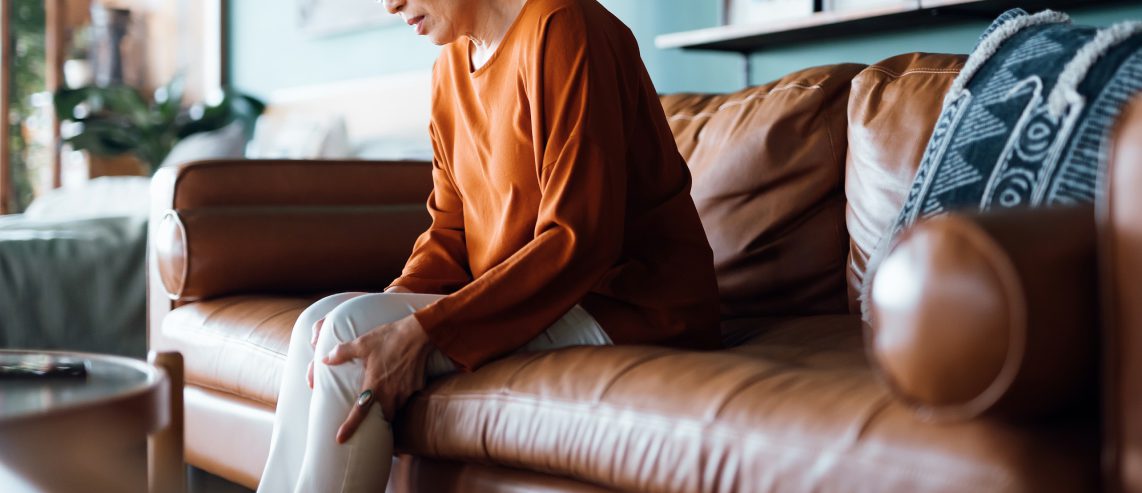Some of the most common causes of pain can be attributed to musculoskeletal conditions.
According to the World Health Organization, musculoskeletal conditions are the leading contributor to disability worldwide, with lower back pain as the leading cause of disability in 160 countries.
Musculoskeletal conditions often impact mobility and dexterity, leading to difficulty performing tasks and doing the things you love.
Because of our aging population, the number of people with musculoskeletal conditions has been increasing rapidly.
But with such a broad definition, what exactly is musculoskeletal pain and how is it treated?
What Is Musculoskeletal Pain?
Simply put, musculoskeletal pain is pain that affects:
- Bones.
- Muscles.
- Tendons and ligaments.
- Joints (including bursae).
Never Miss a Beat!
Subscribe to Our HealthBeat Newsletter!
Thank you for subscribing!
You can now select the specific newsletters you'd like to receive.
You are already subscribed.
Subscribe to more newsletters in our email preference center.
Sorry, an error occurred. Please try again later.
Get Healthy Tips Sent to Your Phone!
Types of Musculoskeletal Pain
There are many different types of musculoskeletal pain, depending on the cause and the location on the body.
Bone pain
Bone pain is typically an achy, dull pain and, unlike muscle or ligament pain, is constantly present — not only when you move certain body parts.
Bone pain commonly results from injury, but also is commonly caused by infection (osteomyelitis), or hormone disorders.
Muscle pain
Muscle pain is also known as myalgia. Cramps, muscle spasms, and joint pain are all hallmarks of myalgia.
Muscle pain is typically caused by an injury to or overuse of a muscle. Stress, loss of blood flow, and infections also are common causes.
Tendon and ligament pain
Pain in tendons and ligaments is typically sharper and happens primarily with use or movement of the affected area. With thousands of tendons in the body, it is very common to experience some level of tendon pain, injury, or discomfort.
Tendonitis — an inflammation or irritation of a tendon — is a common cause of tendon pain. Ligament pains are commonly caused by sprains.
Tendonitis is commonly confused with bursae pain. Bursae pain is caused by bursitis, the infection or inflammation of a small, fluid-filled sac called a bursa, which works to reduce friction during the movement of joints. The bursae cushion your bones, muscles, tendons, and ligaments. Bursitis is caused by overuse, injury (from a heavy blow or a fall), or infection of the bursa sac.
Joint pain
Joint pain also is called arthralgia. Commonly felt in the knees, wrists, elbows, or ankles, pain can range from dull to sharp depending on the cause.
Arthritis is one of the most common causes of joint pain and inflammation, and encompasses more than 100 conditions affecting the joints, including gout, lupus, and fibromyalgia.
Osteoarthritis and rheumatoid arthritis are the most common types of arthritis. Joint pain, inflammation, and stiffness are the primary symptoms of both.
Other Common Causes of Musculoskeletal Pain
Fibromyalgia is a condition that can cause pain throughout the entire body. Along with pain and stiffness, other symptoms of fibromyalgia include fatigue, sleep problems, depression, anxiety, headaches, and problems with memory and concentration.
Pinched nerves can cause pain all throughout the body. A pinched or compressed nerve occurs when surrounding tissues place too much pressure on the nerve. Symptoms include pain in the area of the pinched nerve, pain along the limb where the nerve is located, tingling, numbness, and weakness in the affected body part.
Carpal tunnel syndrome causes pain in the wrist and hand. It occurs when inflammation, or swelling, within the enclosed area of the wrist puts pressure on the median nerve, causing numbness, tingling, and weakness in the hand.
Musculoskeletal Pain Treatment
Due to the vast number of root causes and symptoms of musculoskeletal pain, it is best to seek medical care if pain impacts your ability to do daily activities, gets worse, or does not go away. Even if pain is temporary and comes and goes, it is wise to consult with your health care provider.
To prevent or ease musculoskeletal pain:
- Warm up and stretch before activity.
- Treat early signs of inflammation.
- Maintain proper posture.
- Keep wrists neutral when possible.
- Avoid prolonged static positions.
- Modify manual tasks and alternate strenuous activities with lighter activities throughout the day.
- Use proper lifting techniques.
Care for Musculoskeletal Pain at UPMC
Musculoskeletal problems are the second most common reason for physician visits, and they represent one of the most common causes of disability. Specifically, as many as 80 percent of people will experience low back pain during their lifetime.
Our goal at the UPMC Department of Physical Medicine and Rehabilitation is to explore all treatment options to determine what works best for you. We offer personalized, comprehensive care to address all aspects of your musculoskeletal condition.
Sources
https://www.who.int/news-room/fact-sheets/detail/musculoskeletal-conditions
https://www.ncbi.nlm.nih.gov/pmc/articles/PMC5585011/
https://www.arthritis.org/health-wellness/healthy-living/managing-pain/understanding-pain/musculoskeletal-pain-and-arthritis
https://www.merckmanuals.com/home/bone,-joint,-and-muscle-disorders/symptoms-of-musculoskeletal-disorders/musculoskeletal-pain
https://share.upmc.com/2022/01/chronic-osteomyelitis/?source=search-results_title
https://share.upmc.com/2021/09/sprains-tendonitis-bursitis/?source=search-results_title
https://share.upmc.com/2021/01/arthritis-signs/?source=search-results_title
https://share.upmc.com/2017/01/about-fibromyalgia/?source=search-results_title
https://www.hopkinsmedicine.org/health/conditions-and-diseases/myalgia
https://www.upmc.com/services/orthopaedics/conditions-treatments/tendonitis
https://www.cdc.gov/arthritis/basics/fibromyalgia.htm#:~:text=Fibromyalgia%20(fi%C2%B7bro%C2%B7my,pain%20than%20people%20without%20fibromyalgia.
https://share.upmc.com/2017/03/carpal-tunnel-syndrome/
https://ergonomics.ucla.edu/injuries-and-prevention/preventing-msd-rsi
https://www.merckmanuals.com/home/bone,-joint,-and-muscle-disorders/muscle,-bursa,-and-tendon-disorders/tendinitis-and-tenosynovitis
About Physical Medicine and Rehabilitation
At UPMC, we strive to improve your function after injury or illness. We help people recover from functional, pain-related, and neurological conditions, with both inpatient and outpatient care available. We are dedicated to providing you with exceptional clinical care and focused on developing new technologies and treatments to help you achieve mobility and maintain independence. Find a provider near you.
